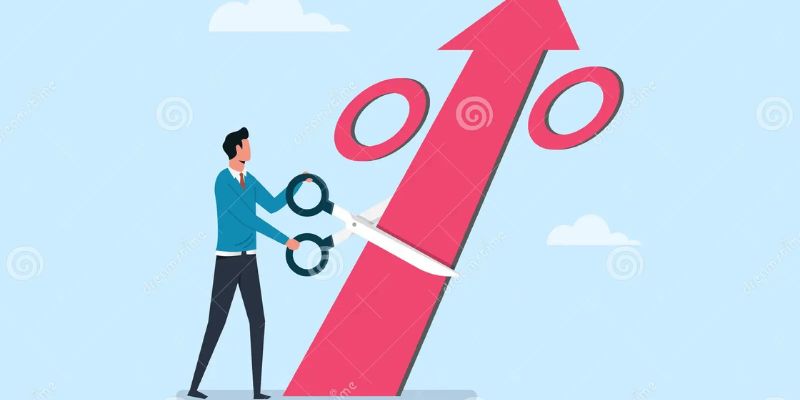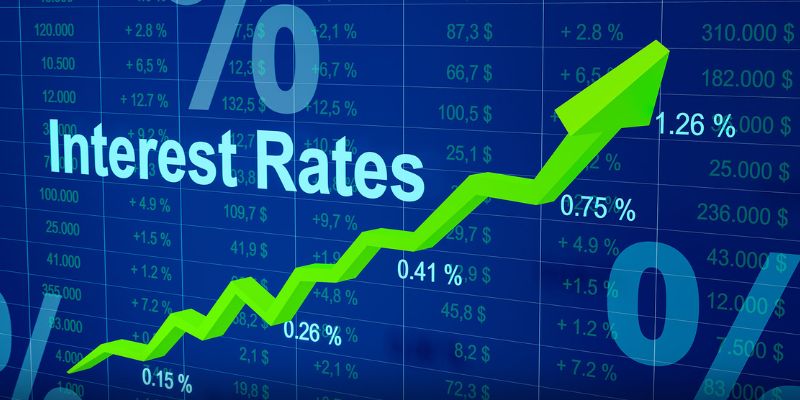Central bank interest rates and monetary policy aren’t just phrases for the evening news; they’re major players in your daily spending and saving game. Think of it this way: every swipe of your card, each chunk of paycheck stashed away for a rainy day, even your dream of a new home—all these are puppets whose strings are pulled by high-powered policy decisions. The rates set by the central bank affect how much you’ll pay on loans and earn on savings. With this in-depth dive, you’ll learn just how much these policies shape your wallet and what you can do to stay ahead.
Understanding Central Bank Policy and Its Direct Impact on Your Finances
The Mechanics of Central Bank Policy Overview
Central banks control money. They make it more or less costly to borrow. Think of a central bank as a powerful player in a complex game. This game has big stakes money, jobs, and the health of an economy. When a central bank moves, your money feels the effects, even if you don’t notice at first.
Interest Rate Impact on Everyday Economic Activities
What happens when interest rates go up or down? Let’s dive in and see. Rates up means loans cost more. If you want to buy a house or a car, it will pinch your wallet more. Businesses also feel this. They borrow less, leading to slower growth.
But why would a central bank raise rates? Imagine the economy is like a pot of water on a stove. If it gets too hot, it can boil over. That’s inflation – prices going up too fast. Higher rates are like turning down the heat. They cool things down. Your savings might earn more, but getting a loan gets harder.
Now, if rates go down, the opposite happens. Loans get cheaper. People spend more. Businesses invest more. This can heat up the economy. It’s like turning up the stove when the water’s too cold. But if it’s too easy to borrow and spend, prices might start to climb fast again.
You might think, “That doesn’t affect me, I don’t have a loan.” But it does! The cost of goods you buy every day can change. When businesses pay more to borrow, they might charge you more. Less money in your pocket at the end of the day.
The central bank’s job is tricky. They need to keep the economy just right. Not too hot, not too cold, but just right. If they get it wrong, we all feel it. When you hear about the federal funds rate or the discount rate, that’s the central bank setting the game rules. It changes how much money flows in the economy.
Banks follow the central bank’s lead. They change their own rates in response. This web of rates touches almost all money movement. You see it in prices from milk to cars, from your mortgage to your savings. If you’re a saver, higher rates are good news. Your savings grow faster. If you’re a borrower, not so much. You pay more over time for the same thing.
Central bank policy is a balancing act. It shapes the value of your money every day. Keep an eye on it. It’s more important to your wallet than you may think.

Inflation and Interest Rates: Navigating the Balance
Exploring Inflation Control Measures
Picture your money as a balloon. Inflation is like air that fills up the balloon. Too much air, and the balloon gets big quick. But, if you let out some air, the balloon does not grow too fast. That’s what central banks do with inflation. They watch prices and try to keep them just right, not too high or too low. When prices rise too fast, the things you buy, like bread and clothes, cost more.
To manage this, central banks use measures like interest rates. They say, “Let’s make it cost more to borrow money.” When it costs more to get a loan, people spend less. Businesses invest less. This slows down the air going into our balloon, I mean, slows down inflation. It’s a big job but someone’s got to do it. They also use other tools, which can seem complex but really just aim at keeping our money strong and steady.
Adjusting to Changes in the Federal Funds Rate and Discount Rate
Now, let’s chat about the federal funds rate. This rate is like the heartbeat of the economy. It’s the cost banks charge each other for loans, overnight. When this rate goes up, banks pay more for loans. Then, they charge you more for your loans, like for your house or car. This can be a pinch on your wallet.
The discount rate is another tool. It’s what banks pay when they borrow from the central bank directly. This doesn’t happen too much. But when it does, it shows banks need emergency cash. It’s a signal. If this rate goes up, your bank might start charging you more too.
These rates changing is a sign. It’s like the central bank is telling everyone, “Hey, we need to slow things down or speed things up.” They want to keep the economy healthy. So, when rates change, it’s crucial to take note. This affects how much you’ll spend on loans and how much you’ll save.
Just remember, the central bank’s moves are all about balance. They aim to keep the economy running smooth, not too hot, not too cold. They’re like a thermostat but for money. When they make the right moves, we all win. Less worry about wild prices and our money keeps its strength. We all want that, right? That’s the sort of balance they gun for. And that’s how central bank interest rates shape your wallet.

The Tools of Monetary Policy and How They Affect You
Navigating Through Periods of Monetary Tightening and Quantitative Easing
Imagine your favorite ice cream shop. Some days, they have extra scoops for free! That’s like when the economy needs a boost, and the central bank steps in. This is “quantitative easing”. It’s a tool they use to make money flow easier by buying stuff like government bonds. It’s a way to encourage people and businesses to spend and invest.
But what if too many people want ice cream, causing issues like long lines or shortages? The shop might limit scoops per person. Similarly, if the economy heats up too much, it can spark inflation – that’s when prices rise and your money buys less. To cool things off, the central bank can use “monetary tightening”. It’s like fewer free scoops to slow down buying.
During tightening, the central bank raises interest rates. Why? It makes borrowing costlier. Think of saving up for a new bike. Higher rates mean you get more money from the bank for saving, but if you wanted to buy the bike on credit, it’s more expensive. This makes people think twice about spending. When people and businesses slow down buying things, the economy cools off.
Quantitative easing does the opposite. The central bank lowers rates, making it cheaper to borrow. If you need that bike for school, low rates mean you can get it without a hefty credit cost. It encourages spending and gets the economy rolling.
You see, these changes don’t just happen far away in suits-and-ties meetings. They reach your wallet directly. Saving, buying, whether to get that bike or not – it’s all linked to these central bank moves.
Deciphering the Central Bank’s Liquidity Adjustment Facility
Liquidity is all about having enough cash on hand. When banks need quick cash, they turn to the central bank’s “liquidity adjustment facility” or LAF. Think of it as a friend you can borrow money from for a short time.
Banks mainly use it in two ways: “repo” and “reverse repo” operations. With repo, banks pledge some of their securities, like government bonds, to get cash. Later, they buy these back. In reverse, the central bank uses it to absorb extra money from the banks.
So, why should you care? The LAF affects the “overnight rate” – the interest rate for these short-term loans. This rate is like the heartbeat of the economy. It influences all sorts of other rates, from what you earn on savings to what you pay on loans.
Let’s say banks get plenty of cash from the LAF at low rates. They’re more likely to lend to people and businesses at lower rates too. But if the rates are high, banks pay more, and so they’ll charge you more for loans.
Understanding the LAF is like being in a boat; knowing when the tide is high or low helps you plan your journey. It’s not just about banks; it’s about how easily you can do things like fix your home or grow your business.
And remember, these tools – tightening, easing, the LAF – they’re used to keep our economy’s ship steady. No one wants a sink or capsize. It’s a craft of balance, and yes, it’s linked to your everyday life.

The Broader Economic Conversation: Policy Rates and Beyond
Understanding the Interplay between Fiscal and Monetary Policy
How does your government spend money? Think roads, schools, health care. That’s fiscal policy. It’s about taxes and government spending. Now, let’s talk about monetary policy. This is the central bank’s toolset. It controls the flow of money in the economy.
Central banks use policy rates to manage this flow. A high rate means borrowing is expensive. People and businesses think twice before taking loans. Lower rates make borrowing cheaper. It’s an invite to spend and grow businesses. Central banks aim for a balance. Stable prices and a healthy flow of money are the goals.
Can fiscal and monetary policy clash? Yes, they can. When the government spends more, people have more money. But if central banks fear this will cause high prices, they might hike up the rates. This cools down spending. So, one policy can undo the other’s work. They work best when they play on the same team.
Examining the Effects of Monetary Policy on the Currency and Consumer Price Index
Now, let’s talk cash – your money’s worth and the stuff you buy. Monetary policy can change both. It’s like a big control knob for the economy. Central banks can turn the knob to control spending and saving.
When rates go up, your currency could get stronger. Why? Higher rates attract foreign investment. More people want your currency. But when currency value jumps, your goods cost more to others. Exports can slow down because of this.
What about the prices at the store – the consumer price index, or CPI? This index tells us about price changes for everyday stuff. Central banks watch the CPI closely. They tweak rates to keep the CPI steady. No one likes when prices bounce up and down.
So, when prices rise too much, central banks may raise rates. Higher rates mean people slow down on spending. This can dial back prices. It’s all about balance. No wild swings in your wallet or the price tags you see in stores.
Central banks have a lot on their plates. They make sure money flows right. They protect how much your money can buy. And they keep a steady hand on the economy’s wheel. Your wallet feels every turn they make. Keep an eye on them; they’re shaping your spending and saving every day.
In this blog, we uncovered how central bank policies touch your wallet. We dove into the ins and outs of interest rates and their influence on what you pay for loans and save in the bank. We also tackled the tough act of balancing inflation by examining the methods used to control it, and how changes in policy rates can affect you directly.
Next, we navigated the complicated tools used in monetary policy, from what it means when money is tight to how things change when the economy needs a boost. We even decoded the tricky topic of liquidity adjustments and how central banks manage cash flow.
Finally, we went beyond the usual chat on policy rates to grasp the dance between fiscal and monetary policy. We explored how these big economic moves can sway your spending power and the value of the money in your pocket.
To wrap it up, understanding these concepts helps you make smarter financial decisions. Knowing the system lets you plan better for the ups and downs of the economy. Stay informed, stay prepared!
Q&A :
How do central bank interest rates affect the economy?
Central bank interest rates, often referred to as the ‘base rate’, play a crucial role in the economy by influencing borrowing costs for consumers and businesses. When central banks lower interest rates, it typically makes borrowing cheaper, stimulating investment and spending, which can help grow the economy. Conversely, when rates are raised, borrowing costs increase, which can slow down economic growth and help control inflation.
What is monetary policy and how is it implemented?
Monetary policy is the process by which a central bank, such as the Federal Reserve in the United States, manages the supply of money and interest rates to achieve economic objectives. It is implemented mainly through changes in the base interest rate, open market operations (buying or selling government securities), and adjusting reserve requirements for banks. The goal is to maintain price stability, manage inflation, and strive for full employment.
How do changes in central bank interest rates impact inflation?
Changes in central bank interest rates can significantly impact inflation. When a central bank raises rates, it generally leads to higher borrowing costs, which can reduce spending and slow the economy, thereby reducing inflationary pressures. On the other hand, lowering interest rates tends to increase spending and boost economic activity, which can, in turn, increase inflation if the economy overheats.
Why do central banks change interest rates?
Central banks change interest rates to manage economic growth and maintain price stability. In periods where the economy is expanding rapidly and inflation is rising above the target level, central banks may increase rates to cool off the economy. Conversely, if economic growth is sluggish and unemployment is high, they may lower rates to stimulate borrowing, investment, and consumption to bolster the economy.
What are the risks of maintaining low central bank interest rates for too long?
Maintaining low central bank interest rates for an extended period can lead to several risks, including the potential for creating asset bubbles as investors search for higher yields, encouraging excessive borrowing by households and businesses, and reducing the effectiveness of monetary policy as rates approach zero (also known as the zero lower bound problem). Moreover, prolonged low rates can also lead to issues with pension fund and insurance company solvency, as they rely on fixed-income investments which yield less when rates are low.

